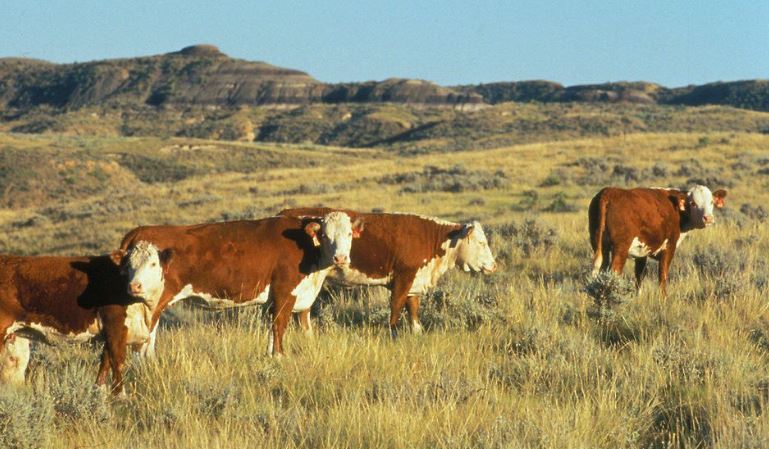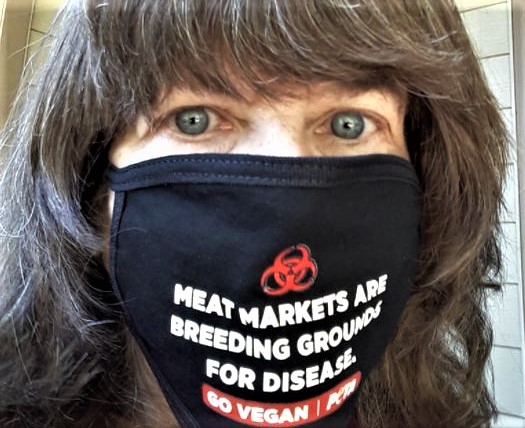 Because, in the minds of many, the right amount of public lands grazing is NO GRAZING, the Federal Government seeks to put the last rancher in Clark County (Cliven Bundy) out of business. WHY? The real idea in Southeast Nevada is to turn hundreds of square miles into another federal conservation area, if not an outright wilderness. WHY? In a country with a $20 trillion dollar federal deficit, where’s the economic benefit in that?
Because, in the minds of many, the right amount of public lands grazing is NO GRAZING, the Federal Government seeks to put the last rancher in Clark County (Cliven Bundy) out of business. WHY? The real idea in Southeast Nevada is to turn hundreds of square miles into another federal conservation area, if not an outright wilderness. WHY? In a country with a $20 trillion dollar federal deficit, where’s the economic benefit in that?
Excerpt reposted from the Las Vegas Review Journal — by Vin Suprynowicz
The Las Vegas Review-Journal regularly receives letters to the editor which are essentially form letters, though they bear different signatures. Typical was one received this month above the signature of Terri Rylander, a member of Friends of Gold Butte, in which she identifies herself as “a business owner living in Mesquite.” (Her business is marketing and web page design.) She further asserts: “People may visit special places like Red Rock Canyon and Gold Butte for different reasons – camping, hunting, hiking, bird watching – but all visitors spend money in our communities at restaurants, hotels, gas stations, and retail stores. Protecting Gold Butte as a national conservation area with wilderness will put this unique area on the map, drawing visitors … and ensure a steady stream of revenue to local communities like Mesquite.”
‘Not good for local economies’
A June 2011 study conducted by researchers at the Jon M. Huntsman School of Business, Utah State University, holds otherwise.
“We find that when controlling for other types of federally held land and additional factors impacting economic conditions, federally designated Wilderness negatively impacts local economic conditions,” wrote USU researchers Brian C. Steed, Ryan M. Yonk and Randy Simmons. “Specifically, we find a significant negative relationship between the presence of Wilderness and county total payroll, county tax receipts, and county average household income.”
WHY?
“Wilderness … is the most restrictive of all federal land-use designations,” the Utah researchers point out. “To preserve wild characteristics, the Wilderness designation prohibits roads, road construction, mechanized travel, and the use of mechanized equipment. Wilderness also impacts extractive industries such as mining, logging, and grazing.”
Ask Cliven Bundy about those “reasonable regulations.”
“Environmentalists claim that Wilderness contributes to a healthy tourism industry,” the Utah researchers continue. But that argument “is simply not supported by the data.”
Nor is it clear that cattle damage the range. In fact, there’s plenty of evidence that ranchers, with their drip lines and water tanks – supporting quail and deer and other populations as well as cattle – and the ungulates themselves, cropping the graze close enough to the ground to allow new green shoots accessible to the tortoise while reducing the fuel buildup that fosters wildfires, are a net benefit to the country, before we even consider the benefits of local, organic beef.
A ‘state’ in name only
Citizens of any state east of the Rockies would likely riot at a proposal that the federal government take over 86 percent of their state’s land area. How did Nevada get into precisely that bind?
In his 1999 profile of Bundy for Reno-based Range magazine, Findley reported Bundy in the 1970s was willing to embrace the “multiple use” of the rangelands then being promoted. “He was patient and tried to cooperate with advice from those he considered his friends in the BLM,” Findley wrote.
“But everything we tried to do – every time we tried some compromise – they wanted more,” Bundy told Findley. “It was like talking to a greedy landlord. Everything became lockout or lockup.”
Findley introduces former Nevada District Court judge and rancher Clel Georgetta, author of the 1972 book “Golden Fleece in Nevada.” He presented the then “almost subversive” legal doctrine that claims by the federal government to more than 86 percent of the land of Nevada “amounted not only to a violation of the intention of Lincoln’s administration in promoting Nevada’s statehood in 1864, but of previous constitutional findings on the ‘equal footing’ of states admitted to the union.”
Thus was born the Sagebrush Rebellion. Legislation introduced in 1979 by then-state Sen. Dean Rhoads, directing the state attorney general to sue the federal government for control of all federal lands not specifically set aside for federal forts, post offices or Indian reservations, “is still a part of Nevada law,” Findley reported, “backed even more by a statewide referendum in 1996 in which voters overwhelmingly supported the idea of state control of public lands.”
So why hasn’t it happened?
“The Nevada attorney general has never taken the argument to federal courts,” Findley explained.
‘Public lands are a myth’
In his 1989 book “Storm Over Rangelands,” the late Nevada rancher Wayne Hage detailed how ranchers, miners, and others possess split title to the Western lands. Here in the arid West, no rancher could likely make a living off a mere 160 acres of deeded land.
So it’s not unusual for different parties to own, say, the grazing and water rights versus the mineral rights to overlapping parcels, while neither claims to “own” all that land, outright. Federal attempts to regulate those long-established rights out of existence violate basic constitutional rights, Hage successfully argued.
The BLM confiscated Hage’s cattle, up Tonopah way. He fought them through the courts for years – and won. But he died soon after. His children continue the struggle.
The federal government controls at least 86 percent of Nevada’s land area. But the federal government can show no bills of sale for these lands, approved by the legislature of the “state” in which they lie – the only method provided by the Constitution for the central government to gain title to, or wield plenary authority over, any lands within the several states.
Ironically enough, Nevada ranchers themselves have resisted reform in the past. Findley’s piece for Range magazine has President Ronald Reagan asking his interior secretary, James Watt, why the federal government couldn’t end its dominion over nearly one-third of the nation’s lands by selling them off or transferring them back to the states.
Watt had to explain to the president that wasn’t really what the ranchers wanted.
Years later, addressing a 1994 cattleman’s meeting, “Watt said Nevada sabotaged the Sagebrush Rebellion,” related Demar Dahl, former head of the state cattleman’s association. “When it came down to it, a lot of the big ranchers were afraid of losing their (federal) allotments.”
Local politicians, as well, find it “hard to turn down that $5 million or whatever,” that Uncle Sam routinely showers on local municipalities, Bundy acknowledges. “My side don’t have much cash. But the other side has put us, what is it, $60 trillion in debt.”
Indeed they have. Yet one of these days they will descend again, with helicopters and contract cowboys, to try and drive the last cattle rancher in Clark County out of business.
Why?
Excerpt reposted from the Las Vegas Review Journal — by Vin Suprynowicz, who at the time was an assistant editorial page editor of the Review-Journal and author of the novel “The Black Arrow” and “Send in the Waco Killers.” See www.vinsuprynowicz.com. TM
RANGE / RANGEFIRE! — Addressing Issues Facing the West / Spreading America’s Cowboy Spirit Beyond the Outback


